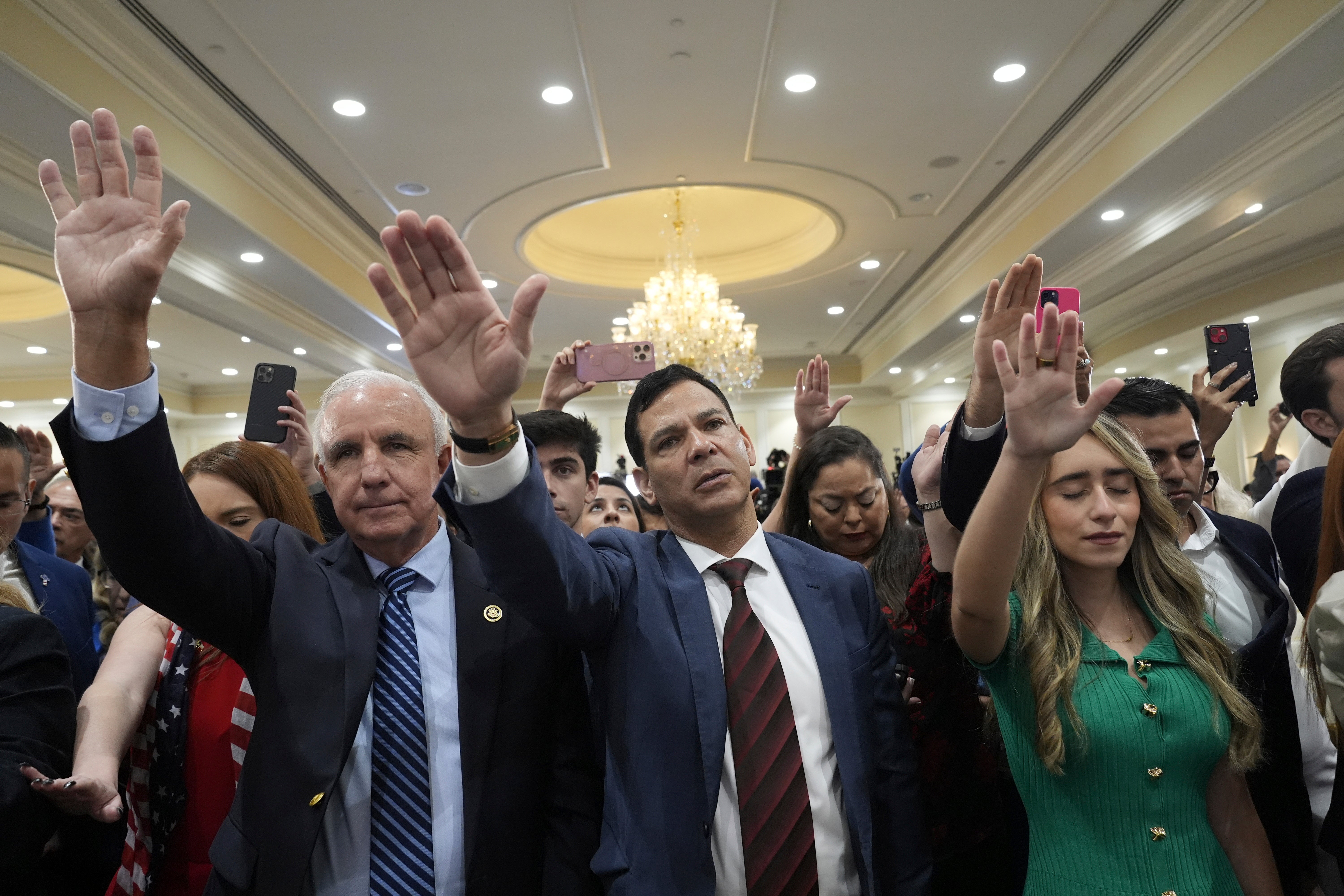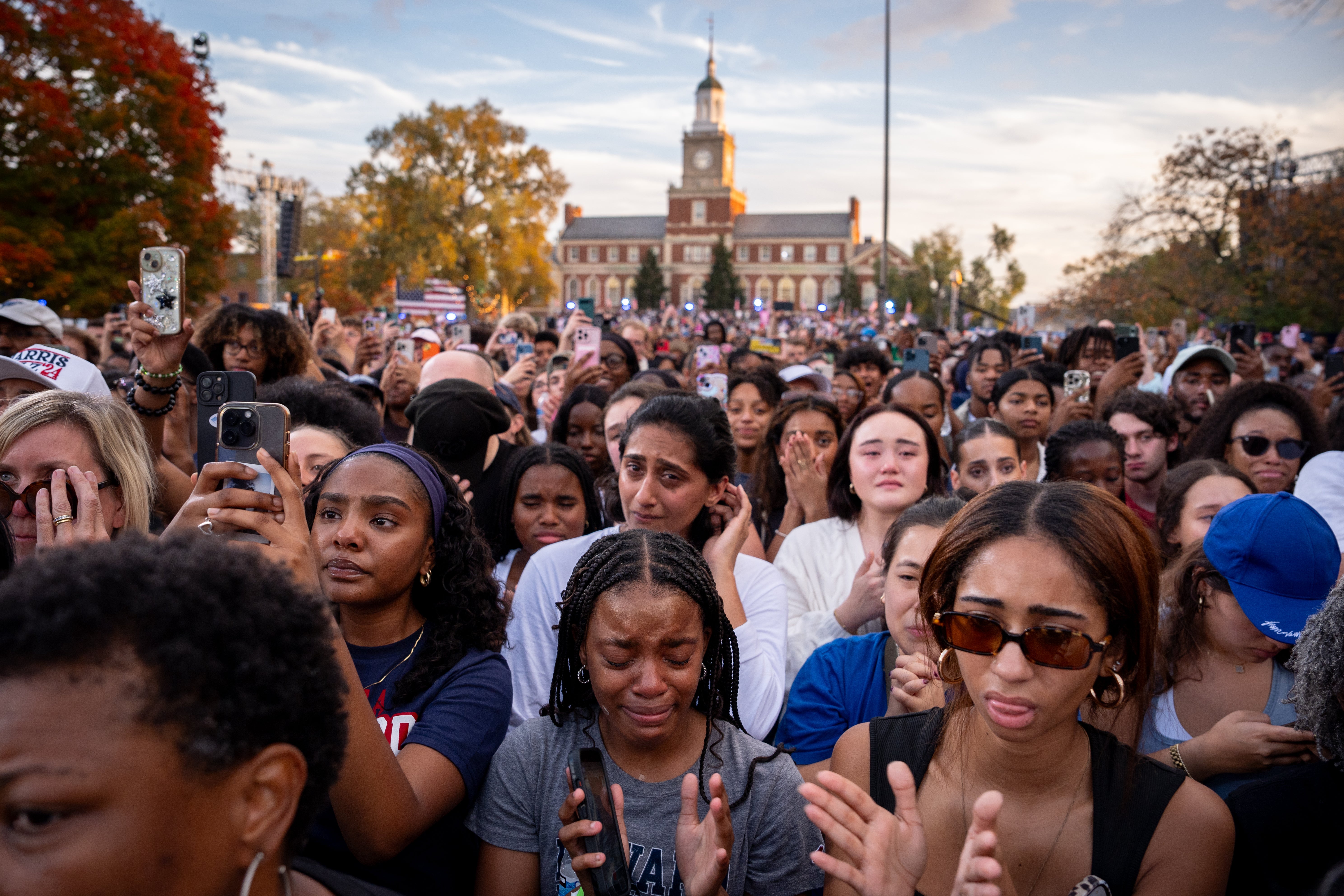How shifts among key demographic voting groups sealed Trump’s 2024 election victory
The Democrats lost votes among Latino men, Black men and even young voters.
Your support helps us to tell the story
From reproductive rights to climate change to Big Tech, The Independent is on the ground when the story is developing. Whether it's investigating the financials of Elon Musk's pro-Trump PAC or producing our latest documentary, 'The A Word', which shines a light on the American women fighting for reproductive rights, we know how important it is to parse out the facts from the messaging.
At such a critical moment in US history, we need reporters on the ground. Your donation allows us to keep sending journalists to speak to both sides of the story.
The Independent is trusted by Americans across the entire political spectrum. And unlike many other quality news outlets, we choose not to lock Americans out of our reporting and analysis with paywalls. We believe quality journalism should be available to everyone, paid for by those who can afford it.
Your support makes all the difference.The final votes are still being counted in the presidential election, but it’s official that Republican Donald Trump cinched a victory against Democratic nominee Kamala Harris.
Exit polls have given us some insight into how different groups voted — and there have been some drastic shifts since 2020.
At first glance, the expected gender divide between men and women was less drastic, but strong splits emerged among Black and Latino voters. Latino men leaned Republican overall for the first time, and 1 in 5 Black men voted for Trump.
Democrats may no longer be able to rely on young voters to boost numbers, as Harris appears on track to have the lowest support among voters aged 18-29 in this century.
Read here for the Independent’s analysis of voter demographics in the 2024 election:
Diving into the Latino shift for Trump
One of the biggest shifts in this election came among Latino voters, among whom Trump made gains of +12 points from 2020, ending up with 45 percent of the vote compared to 53 percent for Harris.
The main movement was comprised of Latino men, who supported Trump more than Harris in this election.
Our DC Bureau Chief Eric Garcia reports that the signs were there for the Democrats losing Latino voters, and that the economy was the biggest motivator in voting for Trump.
In many key Hispanic counties, Trump saw huge gains in his favor.
Momentum was building for Trump among Latinos in rural areas, and he has snatched up two predominantly Hispanic counties in Texas (Willacy County and Starr County).
In other rural Hispanic counties, such as San Miguel in New Mexico and Santa Cruz in Arizona, Harris maintained the Democratic lead but lost up to 17 percent of the vote.

But Trump’s success wasn’t only concentrated in rural areas. In urban areas with predominantly Hispanic populations, Trump also succeeded in consolidating his support.
In Florida, Trump has flipped Miami-Dade County in his favor, which has around a 69 percent Hispanic population.
Trump also won Orlando-neighbouring Osceola County by 2 percent. Biden won the county in 2020, which has a 54 percent Hispanic makeup, by 14 points.
Meanwhile in El Paso, Texas (83 percent Hispanic), Trump swung 20 percent of the vote his way; although Harris still won out overall.
The Black vote
There has been significant speculation over the Democrats losing the Black vote.
Overall, the number of Black voters choosing Trump remained similar to NBC’s 2020 exit poll: increasing by 1 point to 13 percent.
Yet the focus has shifted to the widening gender divide between Black women and Black men.
In 2020, just 9 percent of Black women voted for Trump in 2020, and 19 percent of Black men, according to NBC’s exit poll.
This year, the proportion of Black men voting Trump increased to 21 percent, and among Black women, support decreased to just 7 percent. Harris is a Black woman.
Will Pierce, former adviser to Bernie Sanders and current Republican strategist who focuses on the Black electorate, says that Black men were not prioritized in this election.
“The lack of focus on Black men’s issues is starting to have a visible impact. When people don’t feel appreciated, they may seek representation elsewhere. This could mark a turning point in how both parties engage with Black voters,” he told the Independent.
What is most apparent is the increased gap of 14 percent between Black men and women.
Out of all demographic groups, Black women were Harris’s strongest supporters (91 percent), second only to Black voters aged 65+.

Some commentators argue that Black men are naturally shifting to the right, since they “tend to be both more culturally conservative and more economically liberal than the current version of the Democratic Party.”
Pierce points to Sanders’ statement on the Democrats abandoning the working class, as also being applicable to Black voters.
“It should come as no great surprise that a Democratic Party which has abandoned working class people would find that the working class has abandoned them. While the Democratic leadership defends the status quo, the American people are angry and want change. And they’re right,” Sanders wrote in a statement on X.
Former President Barack Obama also seemingly addressed the cold feet around Harris last month, attributing it to hesitation around a female president.
“Part of it makes me think — and I’m speaking to men directly — part of it makes me think that, well, you just aren’t feeling the idea of having a woman as president,” he said in October.
The gender divide shrank
Another major concern for both parties in this election was the apparent divide between male and female voting patterns.
Yet despite warnings of a colossal gender gap, the exit poll picture is not so clear.
On the one hand, women were more evenly split than in 2020, with an 8 percent lead for Harris compared to a 15 percent lead for Biden among women voters.
Among men, though, Trump improved his bastion of support from an 8-point margin to a 13-point margin, according to the exit polls.
Though there is clearly a gender-based trend, the final numbers are far smaller than the 23-point lead predicted in the weeks before the election.
A gender divide appears in every racial group; most strongly among Latino men and women, the former of whom are 17 percent more likely to support Trump.
The young vote can’t be taken for granted
The youngest generations (age 18 to 29) have been considered a reliable source of Democratic support in the 20th century.
In 2020, NBC’s exit polls showed Biden winning 60 percent of the young vote and Trump just 36 percent.
But this year, Trump closed the gap by 7 percent among people aged 18-29 in the 2024 election. The exit polls show 54 percent voted for Harris and 43 percent for Trump; only a 12-point margin.

In particular, young men were 12 percent more likely to vote Trump than young women; and this was no accident.
According to reports, the Trump campaign was instructed to consult 18-year-old Barron on his dad’s appearances with podcasters popular with young men, like those with Logan Paul and Theo Von.
An estimated 3 percent of young people voted for a third party; part of which may have been linked to dissatisfaction among certain groups over the Democrats’ stance on Gaza.
Across all ages, Jill Stein received over 644,000 votes so far, and Chase Oliver received 578,000; even RFK Jr, who dropped out of the race, received at least 619,000 votes.
Among other age groups, the results were roughly similar to 2020.

Join our commenting forum
Join thought-provoking conversations, follow other Independent readers and see their replies
Comments